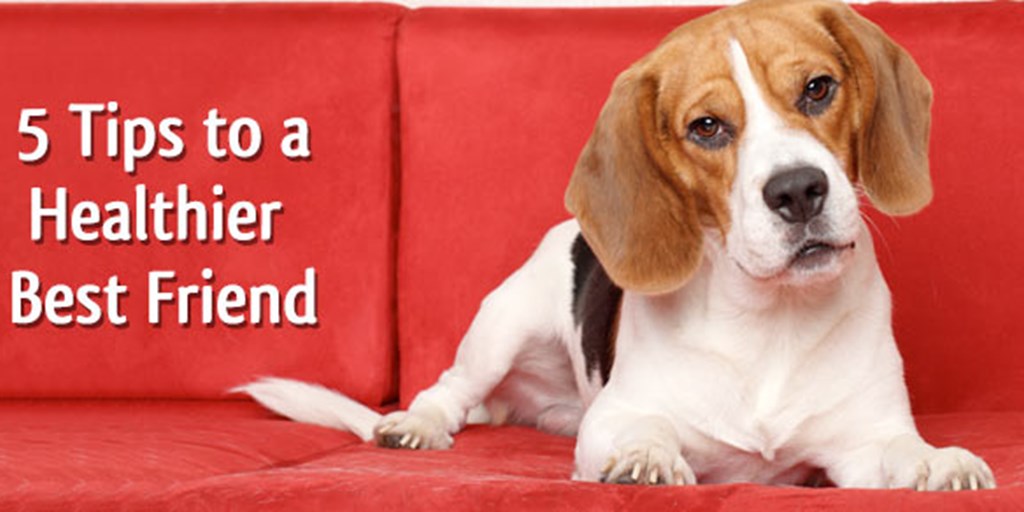Believe it or not, despite growing love for our pets in America, pet obesity has reached an all-time high. In fact, the sixth annual National Pet Obesity Awareness Day Survey conducted by the Association for Pet Obesity Prevention (APOP) found 52.5% of dogs to be overweight or obese by their veterinarian.
Proper weight is important to the health of your dog. It’s no surprise that, just like their human counterparts, dogs at healthy weight are more likely to have less medical concerns, be generally happier and maybe even live longer. A long, happy life is what we all want for our four-footed family members. For these reasons, we’re sharing with you our 5 best tips for winning the battle of the best friend bulge.
1. Recognize that there may be a problem
Is your pet actually overweight? Studies show that most families are unaware that a problem even exists. Assess your dog’s weight via this simple method:
-
Have your dog stand-up
-
From the side, look from his chest to his stomach to his back legs.
-
Is his stomach as large as his chest? If you are not sure, grab a measuring tape and wrap his chest and then his waist.
-
If the answer is yes, his stomach is as big as his chest, your dog could probably lose some weight.
2. Take your responsibility as a pet parent seriously.
As pet parents, we may spend more time worrying about pleasing our pets than being concerned about their health. Our pets live with us and follow our life style, eating habits and exercise patterns. We both love family time. We both love good food. But everything is best in moderation — for us and our four-legged family members.
There is one big difference between our dogs and ourselves: we know if and when we need to better manage our weight. Your dog doesn’t know it’s time to adjust his eating habits. He might be thinking it’s time to eat all he can now, since he’s not sure when his next meal will be. Help your dog get to a healthy weight using these tips.
3. Measure and feed the right food.
While it is often taken for granted, it is important to feed your dog the appropriate amount of dry food daily. Check the feeding guidelines on the food you’re feeding him. The feeding guidelines are just that – a guideline. If your dog is more of a couch potato than the average dog, or if he is running 5 miles every day with you, you should adjust his food down or up to reflect his activity level. Be sure to use an actual dry measuring cup every time you feed him so as not to over-feed him. Weigh your dog once a week and keep track on paper to be sure his weight is headed in the right direction.
If your dog needs to lose some weight, you may want to consider choosing a reduced fat food like Bil-Jac Reduced Fat Formula, which has 30% less fat than Bil-Jac Adult Select. To determine the amount to feed your dog, find his desired weight on the feeding chart and feed that amount to start. Adjust as needed.
You can feed your dog once a day, or divide his feeding schedule into two times a day. Be sure if you feed twice a day to divide the amount he should be eating in half!
Are you sharing people food with him? Skip the people food – it adds fat, sugar and calories to his diet. Moreover, some people food can be bad for your dog, so be smart and cut this from your dog’s diet. Try using a dog training treat, like Bil-Jac Little Jacs, that are smaller and only a few calories for each treat.
4. Weight Management and the Multi-Dog Household
When you have more than one four-footed best friend in the house, feeding can be a little more interesting. You may have one dog who likes to eat more of the food that’s served. Or you may have three dogs that like to see who can eat the most food the fastest!
In either case, if one or more of your dogs are overweight as a result, here are some ideas for managing the feast or famine attitude.
- Feed the dogs one at a time. Put the dogs in separate rooms to eat undisturbed. Alternatively, put all the dogs that are not eating in a separate room or have someone take them out to play. In this way feed each dog appropriately.
- Do not leave food out for grazing. Have your dog(s) eat for a certain amount of time, say 15 minutes, and what they do not eat will be picked up.
- Feed each dog the appropriate diet. If one dog is overweight, you may want to get him a reduced fat food for his feeding time.
,

